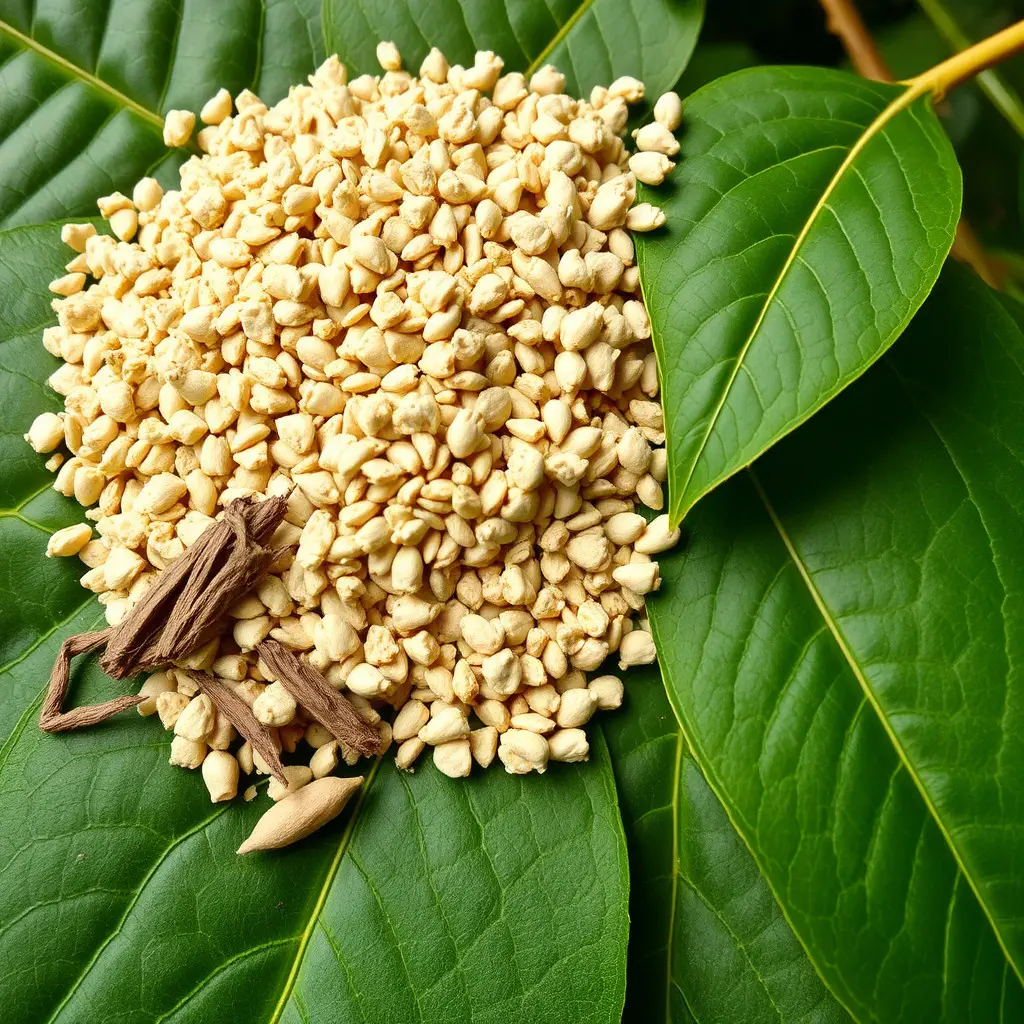Kratom, from the plant Mitragyna speciosa, is a natural pain reliever and mood enhancer used by athletes for recovery. Its active alkaloids interact with opioid receptors, offering relief and potential for substance use disorder treatment. However, individual responses vary, and long-term effects are under study. Athletes considering kratom should be aware of its impact on drug tests, such as the blue lotus smoke test for metabolite detection, and employ strategic usage practices to minimize risks.
“Unleash your training potential with a natural ally—Kratom. This ancient herb has gained traction in athletic circles as a recovery aid, offering more than just pain relief. In this comprehensive guide, we explore the science behind Kratom and its interaction with opioid receptors to enhance post-workout recovery. From understanding its benefits to navigating drug tests, we provide insights for athletes seeking an edge. Learn how Kratom can support your training journey, ensuring safe and effective use while considering the implications of blue lotus smoke drug tests.”
- Understanding Kratom and Its Potential Benefits for Training Recovery
- The Science Behind Kratom: How It Interacts with the Body's Opioid Receptors
- Navigating Blue Lotus Smoke Drug Tests: Strategies to Pass and Ensure Safe Use of Kratom for Athletes
Understanding Kratom and Its Potential Benefits for Training Recovery
Kratom, derived from the tropical plant Mitragyna speciosa, has gained attention in the fitness and training community for its potential to aid recovery. Often used as a natural alternative to prescription painkillers, kratom is known for its analgesic (pain-relieving) properties, making it a popular choice for athletes looking to speed up their recovery process after intense workouts or competitions. The plant contains various alkaloids, including mitragynine and 7-hydroxymitragynine, which are believed to interact with opioid receptors in the body, offering both pain management and potential mood-boosting effects.
For individuals preparing for sports events or rigorous training regimens, kratom’s ability to reduce inflammation and ease muscle soreness could be a game-changer. Moreover, some users report improved focus and mental clarity after consumption, which can benefit high-performance athletes’ mental preparation. However, it’s essential to approach kratom use with caution, as individual responses may vary, and long-term effects are still being studied. When considering its use for training recovery, one should also be aware of potential drug test implications, such as the recent interest in blue lotus smoke drug tests, which can detect kratom metabolites.
The Science Behind Kratom: How It Interacts with the Body's Opioid Receptors
Kratom, derived from the tropical plant Mitragyna speciosa, has gained attention for its potential in aiding recovery from various substance use disorders. The science behind its effectiveness lies in its unique interaction with the body’s opioid receptors. These receptors are part of a complex system that regulates pain perception and reward responses. Kratom contains specific compounds, such as mitragynine and 7-hydroxymitragynine, which mimic the effects of natural endorphins by binding to these opioid receptors. This interaction can help alleviate withdrawal symptoms commonly associated with quitting drugs like opiates and stimulants, making kratom a potential tool in recovery routines.
Recent research has delved into the mechanism of action, suggesting that kratom’s ability to activate certain opioid receptors may contribute to its efficacy in stress reduction, mood elevation, and pain management—all of which are essential aspects of a holistic recovery process. Interestingly, studies have also explored the potential of blue lotus smoke (a kratom extract) as an alternative for drug testing, highlighting the multifaceted nature of this ancient herb. However, it’s crucial to approach kratom use responsibly, as individual responses may vary, and further research is needed to fully understand its therapeutic applications.
Navigating Blue Lotus Smoke Drug Tests: Strategies to Pass and Ensure Safe Use of Kratom for Athletes
Navigating Blue Lotus Smoke Drug Tests is a critical concern for athletes considering kratom for recovery. Kratom, a natural herb with pain-relieving and mood-enhancing properties, can pass through the body quickly, but its metabolite 7-hydroxymitragynine (7-HMG) remains detectable in urine tests for up to 90 days, posing challenges for athletes subject to regular drug screenings. To ensure safe use, athletes must employ strategic approaches.
First, understanding the specific types of drug tests used by sporting organizations is essential. While kratom’s short half-life makes it less likely to show up in acute tests, long-term use may still present a risk. Athletes should opt for micro-dosing or use it sparingly during off-season periods when drug testing is less frequent. Additionally, maintaining a balanced diet rich in fiber and staying hydrated can help flush out kratom metabolites more efficiently. Regular exercise and adequate sleep also support liver detoxification processes, further reducing the likelihood of a positive test result.
Kratom emerges as a promising natural solution for athletes seeking enhanced training recovery. By understanding its mechanism of action, specifically its interaction with opioid receptors, and employing strategies to navigate potential drug tests, such as the blue lotus smoke test, athletes can safely leverage kratom’s benefits. This holistic approach to recovery ensures athletes can push their limits while maintaining peak performance and well-being.






